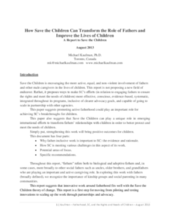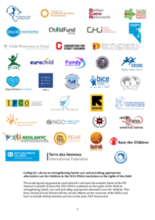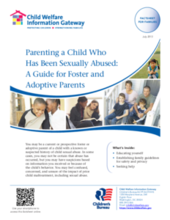Displaying 3641 - 3650 of 4392
In her annual report to the UN General Assembly, the Special Representative of the Secretary-General highlights the results of an expert consultation on violence in early childhood. The consultation highlighted the urgency of supporting families and caregivers in their child-rearing responsibilities and securing a responsive national child protection system to strengthen families’ capacity to raise young children in safe environments and prevent child abandonment and placement in residential care.
This framework outlines what the Key Assets team understand by quality family based foster care and recognises the collective responsibility to promote the rights of children worldwide. Seven standards for providing quality foster care are outlined in this publication.
This paper highlights the importance of promoting active fatherhood in achieving Save the Children’s goals. The paper suggests that engaging fathers in caregiving and building stronger relationships with their children can help to better protect and meet the needs of children.
In his blog post, Harold Goodwin explains how learning about the unintended negative impacts of orphanage volunteering and how the decision was made to remove orphanage volunteering trips from responsibletravel.com’ offerings.
On Wednesday, July 31 2013, UNICEF launched its “#ENDviolence against children” campaign.
One “ethically-minded” tourism company in the UK is shutting down 10 orphanage tours because the firm believes that “orphanage volunteers, despite their best intentions, are part of the problem rather than the solution for children living in poverty throughout the world."
A coalition of over 40 international, regional and national NGOs and networks have issued a joint call to member States of the United Nations General Assembly (UN GA) to focus the 2014 Resolution on the Rights of the Child on strengthening family care and providing appropriate alternative care for children.
This factsheet is designed for caregivers and discusses how they can help children in their care by educating themselves about child sexual abuse, establishing guidelines for safety and privacy in their families, and understanding when and how to seek help if needed.
Au terme d'une enquête, menée depuis plus de vingt ans, impliquant l'examen et la mise en fiche des organisations familiales de centaines de groupes humains pré-industriels dans les diverses régions de l'Eurasie , Emmanuel Todd identifie et définit une forme originelle, commune à toute l'humanité : la famille nucléaire.
In this TED talk, Lemn Sissay recalls his experiences of the care system, the search for his birth family and the insights this has given him.





